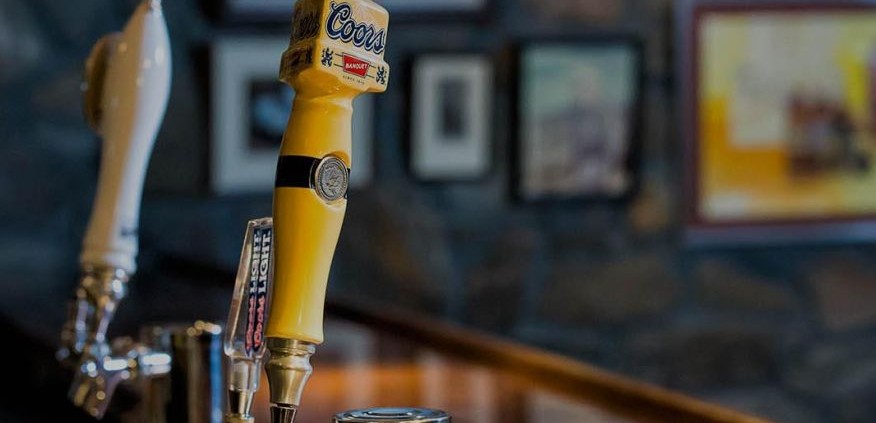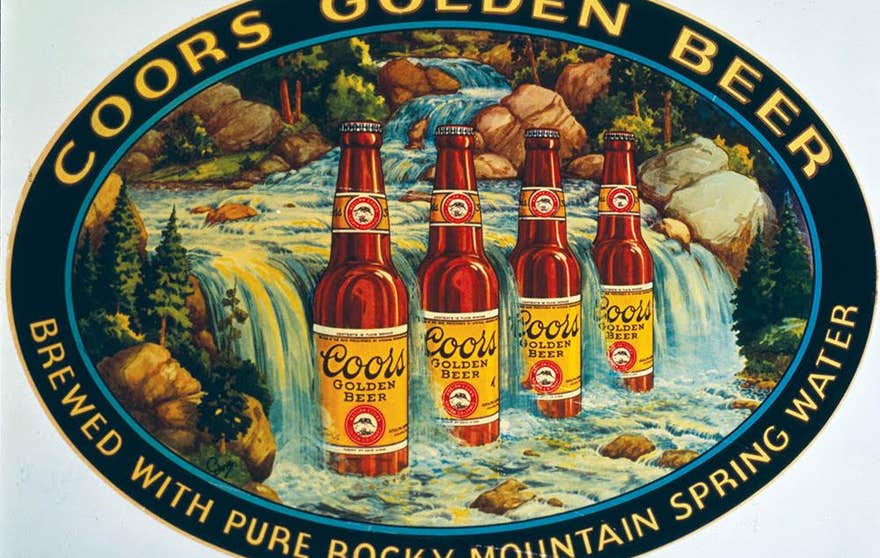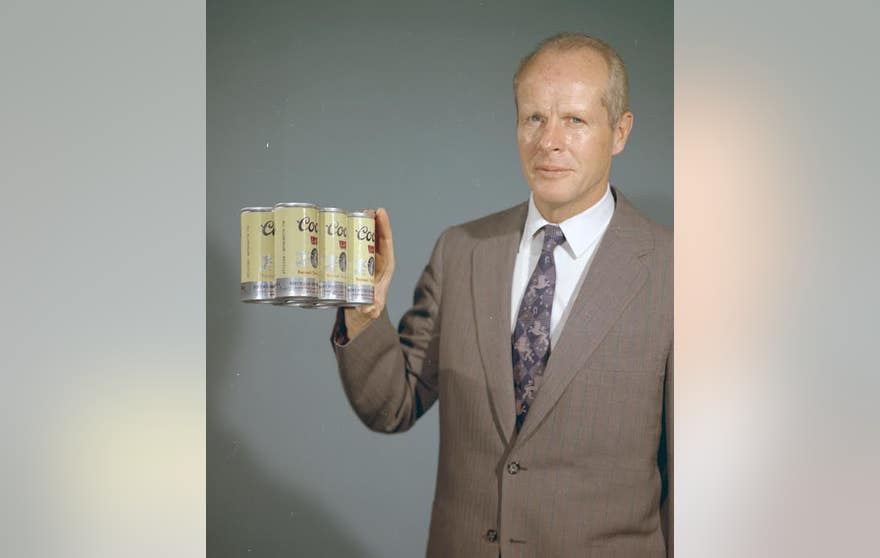Pennsylvania Liquor Control Board Introduces New Licensee Compliance Program
HARRISBURG, Pa., Nov. 30, 2017 /PRNewswire-USNewswire/ — Under new authority granted to the Pennsylvania Liquor Control Board (PLCB) by Act 44 of 2017, the PLCB today announced its Licensee Compliance Program, through which the agency will educate licensees about existing license requirements and suspend the license privileges of licensees who fail to meet those requirements.
Act 44 newly authorizes the PLCB to immediately take away a licensed establishment’s ability to sell and serve alcohol when PLCB analysts find that a licensee doesn’t meet existing requirements in law or regulation related to seating, food, square footage, rooms, and health license authority. Previously, the PLCB had no enforcement authority and was limited to objecting to licenses when they came up for renewal.
“While our new ability to suspend licensees’ operating privileges became effective earlier this month, we know how important it is to educate licensees about what is expected of them and explain how the PLCB will approach complaints and suspensions,” said PLCB Chairman Tim Holden. “We’ve developed a number of resources and fact sheets to help licensees and their communities understand license requirements and the consequences of not abiding by those requirements.”
While Act 44’s new authorities for the PLCB were primarily driven by an interest in addressing so-called stop-n-gos in the Philadelphia area, the PLCB has established Licensee Compliance Program policies and procedures that will be followed uniformly across the commonwealth.
The PLCB has developed a website, www.lcb.pa.gov/licenseecompliance, that features a number of resources explaining the Licensee Compliance Program to licensees and the public. Fact sheets detail the following:
- The kinds of license compliance issues the PLCB will investigate;
- License requirements for various license types;
- What kinds and amounts of food are sufficient for restaurant and eating place licensees;
- The process by which the PLCB will collect complaints, pursue investigations, and suspend operating privileges; and
- Licensees’ appeal rights.
Licensees are being directly informed of the Licensee Compliance Program by email, and the PLCB is distributing information about the new program to various industry and community groups to spread awareness.
In order to allow licensees time to understand and come into compliance with license requirements, the PLCB will begin investigating license compliance complaints in January 2018.
At that time, the PLCB will begin unannounced on-site investigations of licensees about which the agency has received complaints.
Residents are encouraged to visit www.lcb.pa.gov/licenseecompliance to review the kinds of complaints the PLCB can address and report license deficiencies to RA-LBCompliance@pa.gov.
When the PLCB finds a deficiency as a result of an on-site inspection, the investigator will notify the licensee of the deficiency or problem and suspend operating privileges. The licensee will then have the opportunity to resolve the issue to regain operating privileges upon re-inspection. In cases where the PLCB refuses to reinstate operating privileges because of a continued or unaddressed deficiency, the licensee may request a hearing before Commonwealth Court.
“It is our sincere hope that licensees who are good community partners will take this opportunity to self-assess and ensure compliance with license requirements,” said Holden. “Those that don’t will face consequences and will lose their license privileges.”
The PLCB regulates the distribution of beverage alcohol in Pennsylvania, operates more than 600 wine and spirits stores statewide, and licenses 20,000 alcohol producers, retailers, and handlers. The PLCB also works to reduce and prevent dangerous and underage drinking through partnerships with schools, community groups, and licensees. Taxes and store profits – totaling $15.8 billion since the agency’s inception – are returned to Pennsylvania’s General Fund, which finances Pennsylvania’s schools, health and human services programs, law enforcement, and public safety initiatives, among other important public services. The PLCB also provides financial support for the Pennsylvania State Police Bureau of Liquor Control Enforcement, the Department of Drug and Alcohol Programs, other state agencies, and local municipalities across the state. For more information about the PLCB, visit www.lcb.pa.gov.
MEDIA CONTACT: Elizabeth Brassell, 717.783-8864
SOURCE Pennsylvania Liquor Control Board
https://www.prnewswire.com/news-releases/pennsylvania-liquor-control-board-introduces-new-licensee-compliance-program-300564461.html
Menu Labeling Supplemental Guidance
Contains Nonbinding Recommendations
Draft – Not for Implementation
November 2017
This guidance is being distributed for comment purposes only.
This guidance document addresses concerns raised by stakeholders regarding the implementation of nutrition labeling required for foods sold in covered establishments*, including expanded and new interpretations of policy. It also clarifies that there are additional options for complying with the labeling requirements and identifies places where FDA intends to be more flexible in its approach. The guidance reflects input from stakeholders, including the public and industry, in response to an interim final rule (IFR) (82 FR 20825, May 4, 2017). The IFR also extended the compliance date for menu labeling, and invited comments to the docket.
In addition, given extensive further analysis by the FDA, we are withdrawing Questions and Answers 5.17 and 5.18 in our previous guidance entitled “A Labeling Guide for Restaurants and Retail Establishments Selling Away-From-Home Foods – Part II (Menu Labeling Requirements in Accordance With FDA’s Food Labeling Regulations) effective November 7, 2017. We address the issue of distinguishing between menus and other information presented to the consumer in this draft guidance, and once finalized, this will represent our current thinking on this topic. This guidance also includes many graphical depictions in order to convey our thinking on various topics. The draft guidance covers several topic areas outlined in the IFR, including: calorie disclosure signage for self-service food, including buffets and grab-and-go food; various methods for providing calorie disclosure information, including those for pizza; criteria for distinguishing between menus and marketing material; compliance and enforcement; reasonable basis, including the criteria for considering the natural variation of foods; criteria for covered establishments; and standard menu items.
FDA’s guidance documents, including this guidance, do not establish legally enforceable responsibilities. Instead, guidances describe our current thinking on a topic and should be viewed only as recommendations, unless specific regulatory or statutory requirements are cited. The use of the word should in FDA guidances means that something is suggested or recommended, but not required.
This draft guidance, when finalized, will represent the current thinking of the Food and Drug Administration (FDA or we) on this topic. It does not establish any rights for any person and is not binding on FDA or the public. You can use an alternative approach if it satisfies the requirements of the applicable statutes and regulations. To discuss an alternative approach, contact the FDA staff responsible for this guidance as listed on the title page.
Published by the FDA in November 2017
https://www.fda.gov/Food/GuidanceRegulation/GuidanceDocumentsRegulatoryInformation/ucm583487.htm
Tap the Rockies: 10 things you didn’t know about Coors
Coors isn’t just beer. It’s an iconic American brand. (MillerCoors)
Launched by Adolph Coors in 1873 in Golden, Colorado, Coors Brewing Company came close to cult status in the 1970s when you couldn’t get it east of the Mississippi. Coors Light is now the company’s powerhouse—now that it’s available all over the U.S.– but its original Banquet brand is making a comeback.
Here are a few things you might not know about Coors.
1) A macro micro?
Unlike most non-light beers from larger producers, Coors’ old school Banquet brand has been growing in recent years. The Banquet brand–named for Colorado gold miners’ post-work “banquets”—is still made only at the company’s home base in Golden and has a unique retro appeal for millennials seeking “authentic” brands. In 2013, Coors reintroduced Banquet’s old school 1936 “stubby” bottle.
2) A “Thoroly” good beer.
The vintage slogan “Thoroly Aged Coors Golden Banquet Beer. Brewed with 100% Rocky Mountain Water” was brought back with the return of the stubby bottle. The shortened spelling of “thoroughly” was one of 12 spelling changes adopted by the National Education Association in 1898 (the group’s goal was to make English easier to learn and understand). Those spelling reforms were supported by President Teddy Roosevelt– who tried, and failed, to make them official.
3) Feeling the chill.
While the original Banquet brew may be on the rise, its little brother has stolen the show in recent years. Coors Light is now the number two beer in the U.S.—trailing only behind its light lager competitor Bud Light. The light version was introduced in 1978—marking the first time the brewery made more than one product.
4) Cult classic.
For decades Coors was only available in 11 states– all west of the Mississippi. By the 1970s, it achieved something approaching cult status, with folks like President Gerald Ford reportedly returning from trips out west with dozens of cases of Coors. The 1977 comedy-action flick “Smokey and the Bandit,” (starring Burt Reynolds as a trucker hired to illegally transport cases of Coors from Texas to Georgia) may have increased the mystique. Coors wasn’t available in all 50 states until 1991.
5) Molson, Miller and growing.
Coors merged with Canadian brewing giant Molson in 2005. Today, Molson Coors and SAB Miller are the two parent companies to MillerCoors. The company also owns Blue Moon Brewing Company, Leinenkugel and dozens of smaller brands.
6) From tea sets to semiconductors.
Prohibition came to Colorado four years earlier than the rest of the nation, and during the dry years, the Coors family turned to ceramics as a way to partially maintain revenue streams. In 1913, Adolph Coors bought the Herold China and Pottery Co. and renamed it Coors Porcelain Co. a few years later. The company tapped into clay deposits around Golden area to make tea sets, creamers, sugar bowls, cookware and even spark plugs. These days, things have gone high tech: a branch of the Coors family runs CoorsTek, the largest technical ceramics manufacturer in the world, producing everything from semiconductor equipment to car parts, with more than 40 facilities around the globe.
7) Aluminum innovators.
Coors started its recycling program in the 1880s, offering 45 cents for a dozen returned quart bottles. In 1959 Bill Coors, the grandson of the company’s founder, scrapped the traditional steel beer can in favor of the country’s first aluminum beverage can. The new material–along with Coors offering a penny for every can returned to the brewer– helped introduce the idea of recycling to the American public. Today Miller-Coors co-operates the nation’s largest aluminum can manufacturing plant in Golden. Coors and Ball Corporation joined forces in 2003 to create Rocky Mountain Metal Container, the nation’s largest aluminum can plant, located on a million square foot facility in Golden. The contract between Coors and Ball calls for the production of 4.5 billion cans per year to supply Coors breweries.
8) It’s still a family affair.
Despite two mergers, Adolph Coors’ descendants are still heavily involved with the brand. His great-grandson Peter Hanson Coors is a former Coors CEO and serves as a current chairman on the board of MillerCoors. Coors has six children, and several are involved with the family business. His son Peter sits on the Molson Coors board of directors and runs one of the company’s East Coast breweries. A Coors spokesperson told us members of the Coors family still taste test a batch of Banquet every week.
9) Sustainable thinking.
MillerCoors announced this year that all of its breweries are now “landfill free.” Coors’ Golden, brewery was ahead of the curve, achieving landfill free status in 2013. Coors now reuses or recycles close to 100 percent of all brewery waste, including everything from residual brewer’s grain and spent yeast, re-melted glass, aluminum, plastic, wood to other materials used in the beer making process. Coors has also reduced energy use at its Golden facility by 50 percent since 2010. In 2016, the company stopped using coal at the Golden brewery and now uses only natural gas.
10) It’s all about that Rocky Mountain water.
According to company lore, Adolph Coors started his journey in Baltimore before the turn of the century, moving west until he found the perfect water for his beer in Golden. Now, in an effort to preserve that sacred mountain water, Coors has gradually reduced the overall amount of water used per barrel of beer, using 3 barrels of water per barrel of beer. According to its website, parent company Molson Coors reduced its overall water use by over 500 million liters in 2014. Over the past four years, the company says it’s reduced water used at its Golden brewery by roughly 15 percent.
Craft Beer Growth Will Continue in the U.S.
A new report from IBIS World says that the craft beer industry — which includes microbreweries that brew less than 6 million barrels of beer per year and brewpubs that make beer for consumption onsite — will grow at an annualized rate of 7.2 percent from 2013-2018. By 2018, revenue will reach $5.6 billion, up from $3.9 billion in 2013.
But even as the industry’s popularity continues, its growth rate over the next five years will be lower than the previous five years, which averaged an annualized growth rate of 10.9 percent. That decreased rate will come from larger breweries rebranding to compete with the popularity of craft beer and those same companies buying up their smaller competitors, according to the report.
Still, one of the biggest sources of growth over the next five years will be exports to countries “relatively untapped by craft breweries,” including neighboring Canada. Export growth is expected to be around 35 percent each year for the next five years.
Source: http://www.smartplanet.com/







